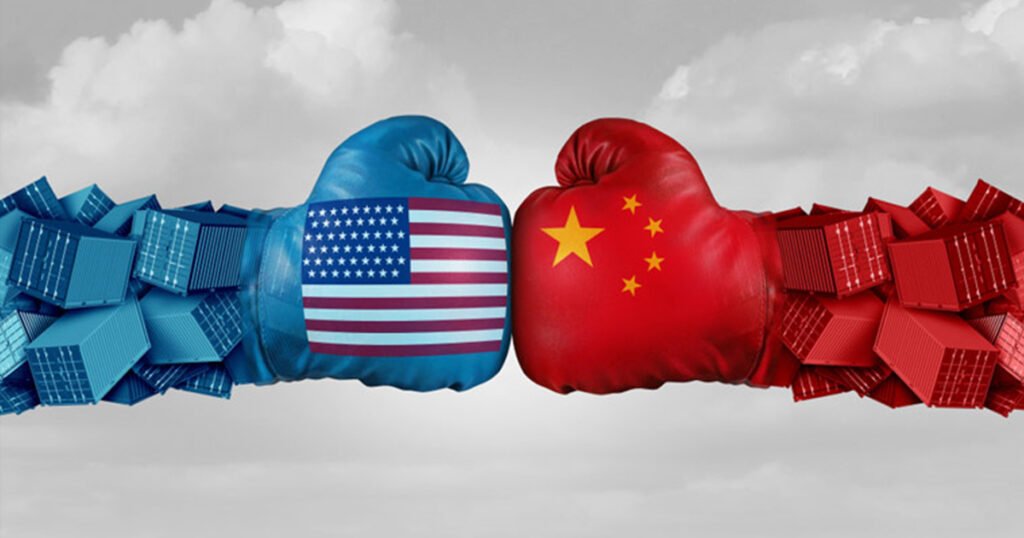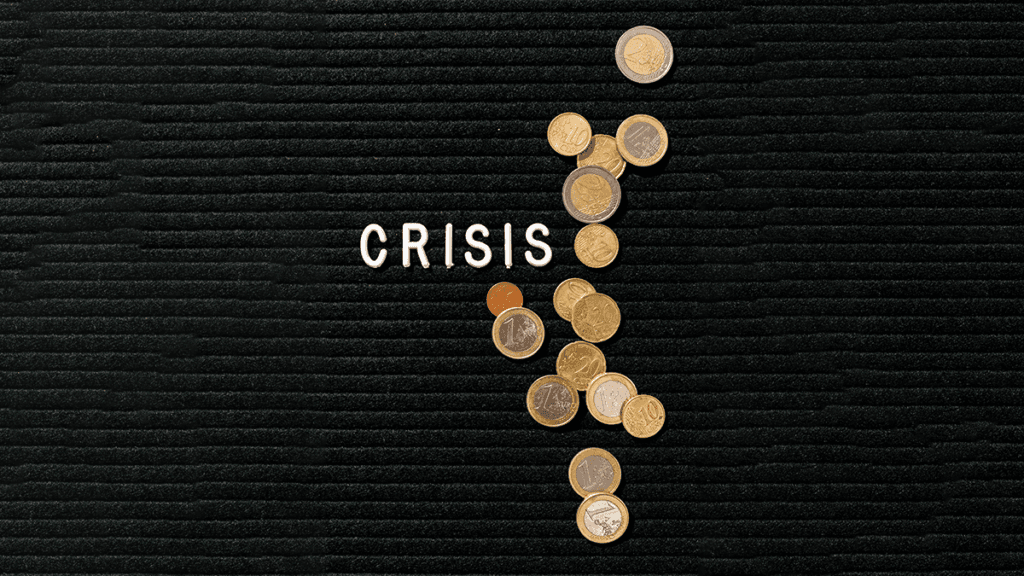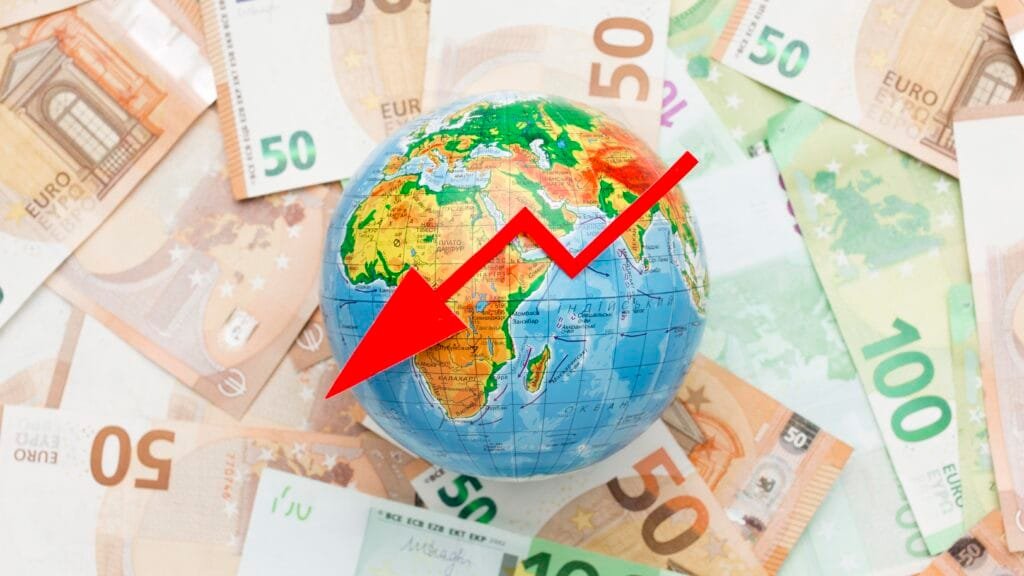Once upon a time, global power was measured in missiles and battleships. Then came the age of oil and data. Now, in the heart of 2025, a new war is brewing— not with tanks or tariffs, but with code, compliance, and crypto. The battleground? The world’s financial architecture. And the prize? Nothing less than monetary supremacy.
China and the United States, long locked in a tug-of-war over trade, tech, and territorial influence, are now deepening their rivalry in an arena that was unthinkable a decade ago— digital currency infrastructure. The great financial transformation of the 21st century is underway, and these two superpowers are laying competing tracks to define who will rule the rails of the future economy.
At the heart of this rivalry lie two digital visions. On one side stands the United States, rallying around regulated dollar-backed stablecoins like USDC. On the other is China, aggressively promoting the e-CNY (digital yuan), a sovereign digital currency designed not just to digitize transactions but to rewrite the very rules of international trade.
Their strategies could not be more different. The U.S. has chosen the path of public-private collaboration, empowering fintech giants like Circle and Coinbase under the watchful eye of newly passed legislation such as the GENIUS Act. China, by contrast, is orchestrating a top-down revolution, where the state controls not only the code but also the rails, the rules, and the reach.
Each model comes with its strengths—and its dangers. And for the rest of the world, the stakes are enormous.
Hong Kong Moves, Washington Responds
In May 2025, Hong Kong passed landmark legislation to regulate fiat-referenced stablecoins. This move wasn’t just a regulatory milestone— it was a message. It signaled the city’s intent to become the global hub for digital finance, firmly in step with Beijing’s ambition to globalize the e-CNY.
In response, the U.S. Congress pushed through the GENIUS Act in June— a sweeping bipartisan effort to establish a legal framework for payment stablecoins. By enforcing transparency, asset-backing, and registration, the law aimed to reassure global markets that the digital dollar could be trusted. It wasn’t just about innovation; it was about dominance.
The Numbers Don’t Lie— Yet
By the numbers, the dollar still reigns supreme. As of 2022, it accounted for 88% of global foreign exchange transactions, 70% of foreign currency debt issuance, and nearly half of all cross-border liabilities. The Chinese yuan, by contrast, accounted for just 7% of global FX turnover.
But that’s only part of the story. Because if you zoom into specific regions— particularly BRICS nations and other emerging markets— a quiet revolution is taking place.
Take China and Russia: bilateral trade reached a record $218 billion in 2024, with a large portion now settled in yuan and rubles. India-Russia trade hit $66 billion, much of it bypassing the dollar. These aren’t anomalies— they’re part of a deliberate de-dollarization strategy, and Beijing is leading the charge.
At the BRICS summit in Rio de Janeiro earlier this year, leaders called explicitly for alternatives to dollar-based trade. They denounced what they called “weaponized finance”— unilateral sanctions and tariffs— and endorsed the expansion of payment systems like China’s CIPS and Russia’s SPFS.
BRICS, CIPS, and the Rise of the Parallel System
China’s Cross-Border Interbank Payment System (CIPS) is rapidly expanding, offering an alternative to SWIFT for clearing yuan-based transactions. Crucially, it now interoperates with Russia’s SPFS, creating a pipeline through which sanctioned countries can move money without touching a single dollar.
This shift has real consequences. It allows BRICS nations—and others watching closely—to trade, lend, and invest in ways that reduce their exposure to the dollar and the Western-dominated global financial system.
But it’s not just about politics. There’s a practical side to the pivot. The New Development Bank, a BRICS-led institution, has already issued over $2.1 billion in local currency loans, reducing the need for dollar-denominated funding. And its $100 billion Contingent Reserve Arrangement gives member countries access to emergency liquidity— without U.S. approval.
If finance is about trust, then China is betting that it can earn it— not by replacing the dollar outright, but by offering enough alternatives that dependence on it becomes a choice, not a necessity.

The U.S. Strikes Back with Stablecoins
Yet the U.S. is not standing still. It may not have a central bank digital currency (CBDC) in the pipeline— at least not yet— but it does have something else: stablecoins.
USDC, the most prominent of these, is growing at breakneck speed. By early 2025, its circulation had surged by 78% year-over-year, crossing $60 billion in active supply. Monthly volumes hit $1 trillion in November 2024. And total lifetime transactions? Over $20 trillion.
Perhaps more impressive is USDC’s global reach. It’s accessible in more than 180 countries and supported by a vast network of banks and blockchain protocols. Cross-chain transfer protocols alone facilitated over $20 billion in inter-blockchain transfers— proof that stablecoins are not just dollar proxies but programmable, borderless assets.
The game-changer, however, may come from an unlikely place: China.
AntChain and the Ironic Convergence
In a surprising twist of fate, Ant International— the overseas arm of Jack Ma’s Ant Group— is preparing to integrate USDC into its AntChain platform. If that integration happens, it will open the door for USDC to be used by over a billion users via Alipay, one of the most popular digital wallets in Asia.
That development would effectively stitch together U.S. regulatory muscle and Chinese fintech scale— a convergence that could reinforce the dollar’s digital edge even within China’s own technological backyard.
It’s a paradox that speaks to the complexity of the digital economy. Even as governments compete, companies are collaborating. And sometimes, those collaborations subvert national agendas.
IMF Warnings and the Risk of Fragmentation
Yet for all its promise, the rise of competing digital currencies brings significant risk. A world divided into incompatible monetary systems is a world more vulnerable to shocks. The International Monetary Fund (IMF) has raised repeated concerns that fragmentation— particularly in digital payment infrastructures— could lead to capital flow volatility, liquidity mismatches, and even systemic crises.
In a 2024 policy note, the IMF warned that “the payment efficiency gains of digital money may be offset by financial safety-net challenges under stress,” especially if reserve assets splinter into incompatible systems. The need for global liquidity backstops, coordinated regulatory frameworks, and multilateral trust has never been greater.
Yet, the geopolitical winds are blowing in the opposite direction. Sanctioned countries are turning inward; tech alliances are becoming more regional; and digital currency regimes are increasingly built to exclude, not include.
Gold’s Silent Comeback
As digital currency wars rage, an old player is making a comeback: gold.
In the first quarter of 2025 alone, emerging market central banks bought over 244 metric tons of gold— the highest quarterly total in years. It’s a telling signal. When digital trust falters, physical stores of value resurface. And when governments hedge against dollar dominance, gold remains the ultimate fallback.
This trend reflects deeper anxieties: not just about dollar hegemony, but about the stability of digital networks in a world marked by cyberattacks, sanctions, and technological decoupling.
The View from the Ivory Tower
Kenneth Rogoff, the Harvard economist and former IMF chief, has called this moment the most significant turning point in global currency politics since the end of the gold standard.
“The dollar will not vanish,” he told the Financial Times. “But it will lose market share—first to the yuan, then to the euro, and increasingly to non-sovereign assets like cryptocurrencies and gold.”
Rogoff’s prognosis? Expect a messy, multi-decade transition. But don’t underestimate the symbolism of today’s shifts. What we’re witnessing, he argues, is the unwinding of the post-Bretton Woods consensus, accelerated by technological change and geopolitical distrust.
Winners, Losers, and the Path Ahead
So who wins this digital currency war?
It depends. If success is measured in reach, USDC may have the upper hand. If it’s about policy control, the e-CNY wins by a mile. But if trust becomes the currency of the future— as many believe— then neither side may prevail unless interoperability, inclusion, and coordination improve.
Financial institutions face mounting pressure. Regulatory arbitrage, currency volatility, and compliance headaches loom large. For emerging markets, the opportunities to bypass the dollar are tempting— but they come with new dependencies, this time on regional infrastructure and tech-finance platforms.
And for the rest of us— the global users of money— the future feels both empowering and unnerving. With every QR code scanned, every wallet downloaded, and every token transferred, we participate in a system that is being reshaped in real-time, not just by innovation, but by ideology.
The Cold War of the 20th century was about missiles and ideology. This one is about algorithms and liquidity.
The clash between China and the U.S. over digital currencies is more than a financial rivalry— it’s a fight over the architecture of trust in a digital age. It’s about who sets the rules, who builds the rails, and who owns the flows.
As the world splinters into competing financial ecosystems, the need for diplomacy, transparency, and resilience has never been greater. The global monetary order is not dying— it’s evolving. And as it does, the nations, companies, and citizens that understand this shift— and adapt to it— will shape the next chapter of economic history.









